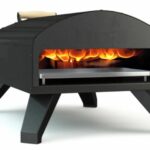The Best Fluffy Pancakes recipe you will fall in love with. Full of tips and tricks to help you make the best pancakes.
Budget Pizza Oven from Big Horn
Big Horn Pizza Oven
The Big Horn oven is fueled by only wood pellets. It takes about 300 grams of pellets to get it hot enough to cook the first pizza. After that, you have to constantly add a scoop of pellets after every pizza you cook to keep the fire hot enough for the next one. It’s definitely not the most convenient and fuel-efficient pellet oven out there.
The whole unit is made of thick stainless steel. It’s sturdy and strong, except for the wood handle on the door. It loosens up after some time hence causing the door to rotate while holding it. The door itself isn’t hinged too. You have to remove it completely to check your pizza.
The oven takes about 20 to 30 minutes to heat up but it reaches temperatures of up to 900°F and the whole interior gets heated uniformly. However, It’s not insulated hence it doesn’t retain the heat well, even the pizza stone (it’s thin). You have to feed it pellets every time and wait at least 5 minutes for it to reheat again to cook the next pizza. The cooking space is a bit small as well. It fits only 9 to 11-inch pizzas.
That said, the entire unit is compact, lightweight (25 lbs), and portable – the legs are foldable and the chimney is detachable. It requires some assembly, though, as it comes in 12 pieces. Accessories like the oven cover, the pizza peel, and the thermometer are not included.
Overall, the Big Horn is a decent pizza oven. Keeping the heat and flame consistent is certainly a challenge, but once you manage that, everything flows pretty smoothly. You’re able to get good results with nearly every pizza you cook in it. Moreover, the wood pellets infuse a smoky wood-fired flavor into the pizzas that make them taste even more delicious. It falls short in some areas but it works and it’s budget-friendly, which makes it worth considering.
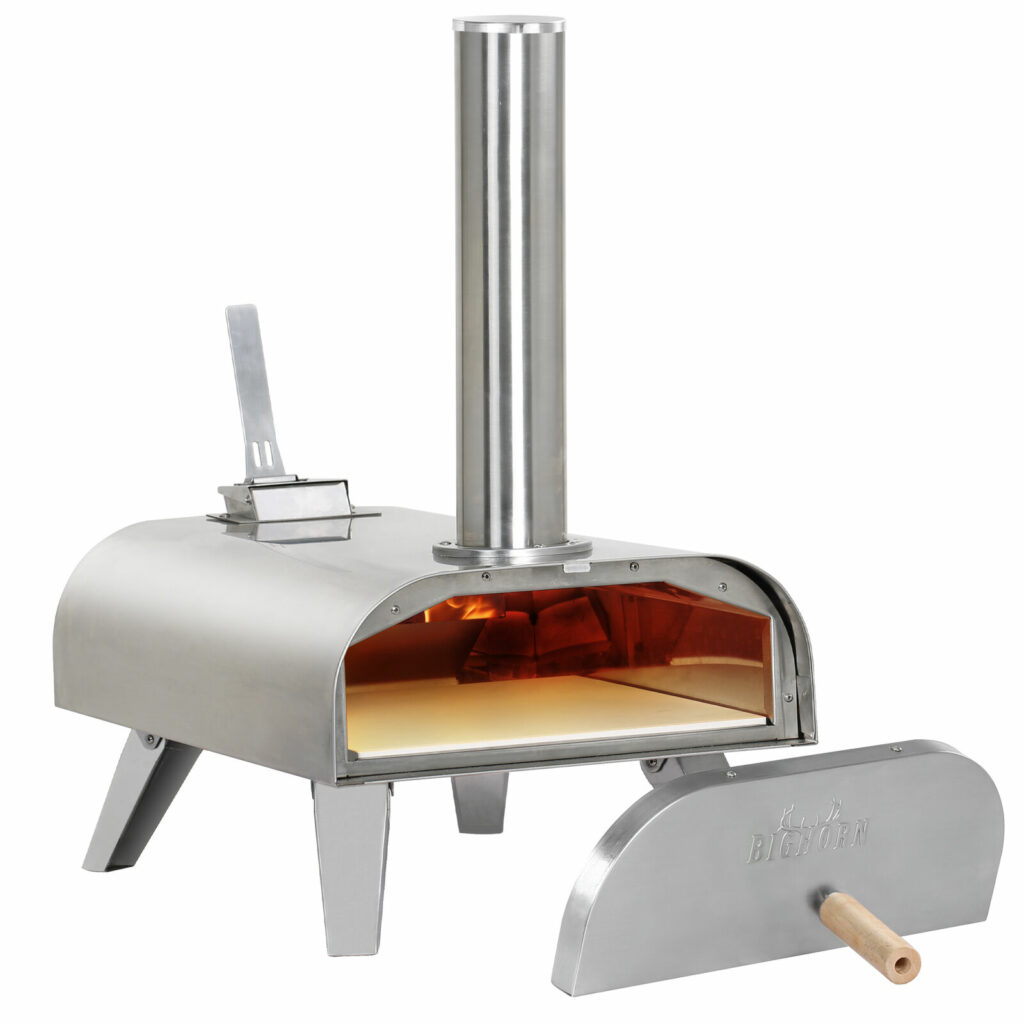
Big Horn Outdoors manufactures various kinds of cooking accessories like smokers, grills, fire pits, and barbeques. One of their relatively new additions is pizza ovens and their first try is the Big Horn wood pellet pizza oven. It’s substantially less priced (around $200) compared to similar wood pellet pizza ovens from more well-known companies like the Ooni Fyra (priced at $350).
We put it to the test to see how it stands out and at first glance, the oven looked attractive and modern. The design was quite similar to the Ooni Karu 12 but with a more seamless body. The build quality was fairly good too and we found the unit to be simple to move around.
Wood pellets are the only fuel source for this Big Horn oven and they did get it to high temperatures (slightly over 860°F) as stated. But, it takes a bit of time to get to temperature, and maintaining the heat and flame was challenging. Once we got a hang of it though, we were able to make decent pizzas with the oven.
Overall, we were pleased with the results and the cooking time, but from having to add pellets after every pizza to a poorly-designed door, the Big Horn definitely wasn’t easy to use. Some parts also felt clunky and of low quality. Below is our in-depth review of this popular oven.
Design

At first sight, it was apparent that the Big Horn pizza oven looked similar to the Ooni Karu 12 model. It featured the same chimney design and dome-shaped body. The whole body was brushed stainless steel while the chimney was sleek stainless steel just like the Karu 12. However, the body had a more smooth, seamless finish with nice curves that made it look more attractive and modern than the Ooni Karu model.

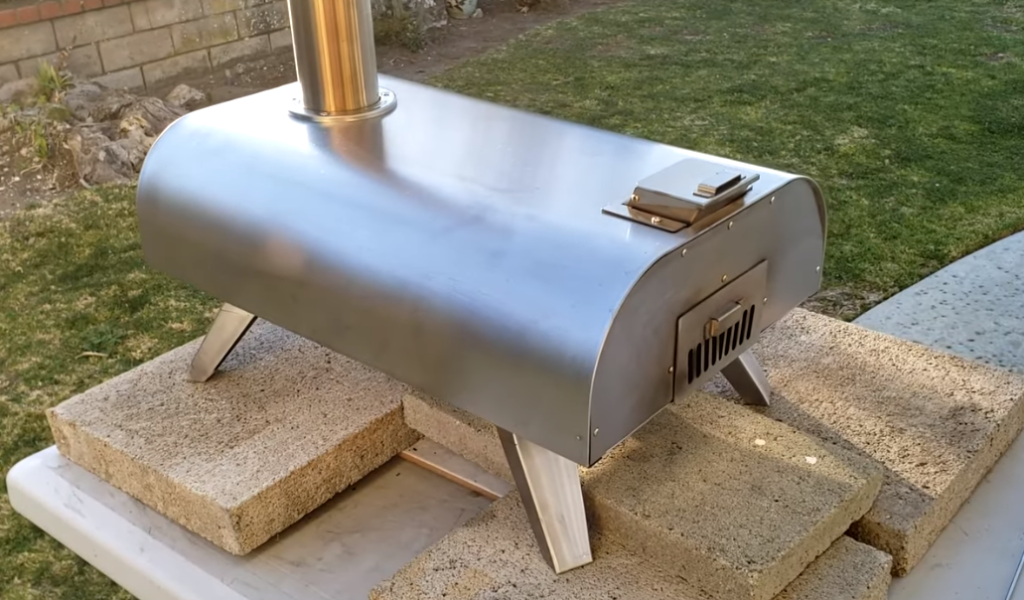
Not every part was smooth though. Reaching inside of the oven to get the parts for assembly or for cleaning can get your hands cut because some edges inside there are rough and sharp.

The chimney does come off easily and it features a stopper/cap at the end that doubles up as a pellet scoop. The Big Horn also has a door that’s meant to keep the heat inside. It features a wooden handle that remains cool, so you don’t get to touch the hot surface while opening the door after the oven heats up or cooks a pizza.

The problem is that you can’t see the way the pizza is cooking once you close the door, which is unfortunate considering that you have to check it constantly so that it doesn’t get burned.
The door design is equally bad. Opening or closing it is difficult. It has no hinges, so you have to get the whole of it off to check your pizza and then set it back in place again. It’s definitely hard and not safe at all to handle, especially when hot.

It can even burn your table or surface when you put it down if it’s not a metal or marble top table. It left a burn mark on our table the first time I placed it on it. In fact, the oven itself almost dropped off the table because the door couldn’t get off easily.
Apart from the height of the chimney, the entire unit was compact enough to sit on our small tabletop. Its overall size is just 21.6” L x 14.2” W x 24” H, so it doesn’t take up so much space in the backyard. You can fit it anywhere you need.
It sits on three foldable legs and it’s also lightweight (around 25 lbs). We found it very easy to carry and move around. It’s completely portable. You can detach the chimney and place it inside the oven – it fits nicely inside for easy storage and transport. With the foldable legs and compact size, you won’t have much trouble bringing it out when needed or taking it anywhere you want such as on road trips, tailgate parties, or camping.


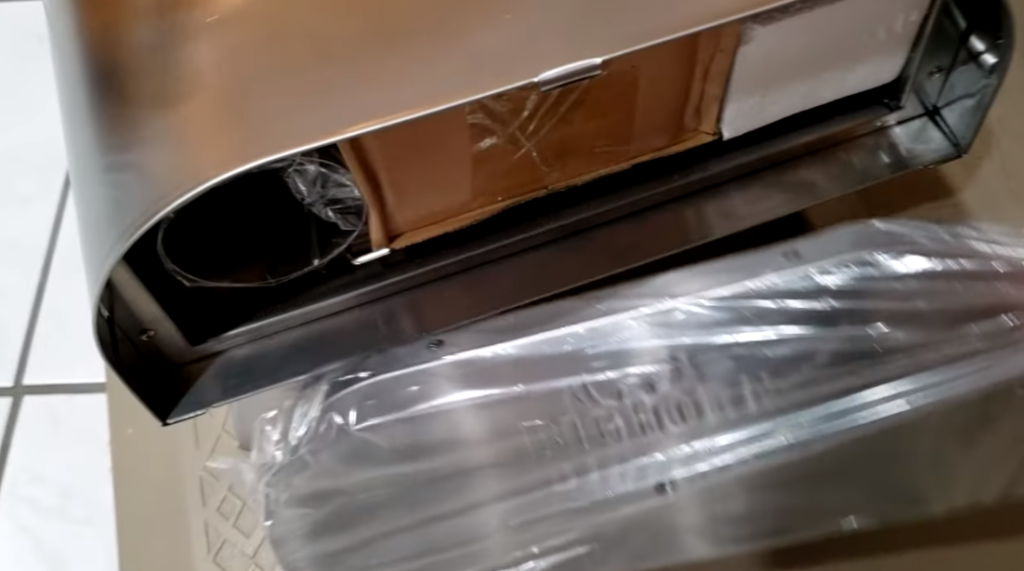
Our Score: 8 out of 10

Big Horn Pizza Oven
Build Quality
The build quality of this Big Horn pizza oven was decent. Except for a few parts, it didn’t feel inferior at all to the Ooni Karu 12. The shell was sturdy and strong. The stainless steel used to make it was pretty thick. Even the legs and chimney were made of fairly thick stainless steel, so the whole construction felt really solid and tough.


All the welds were clean and smooth on the exterior part of the shell. Only the inside had sharp edges, which was rather unfortunate given how seamless the exterior was.
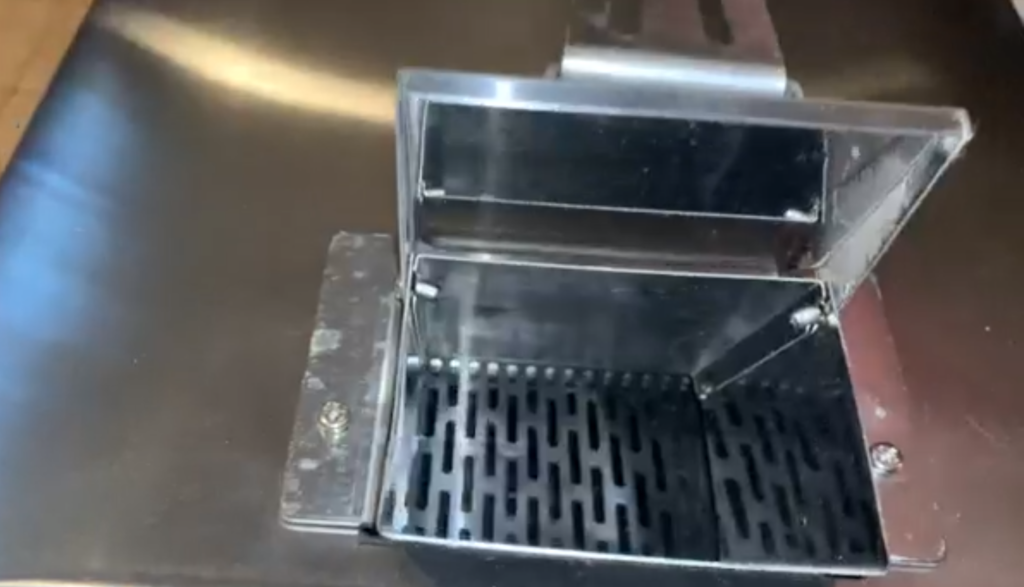
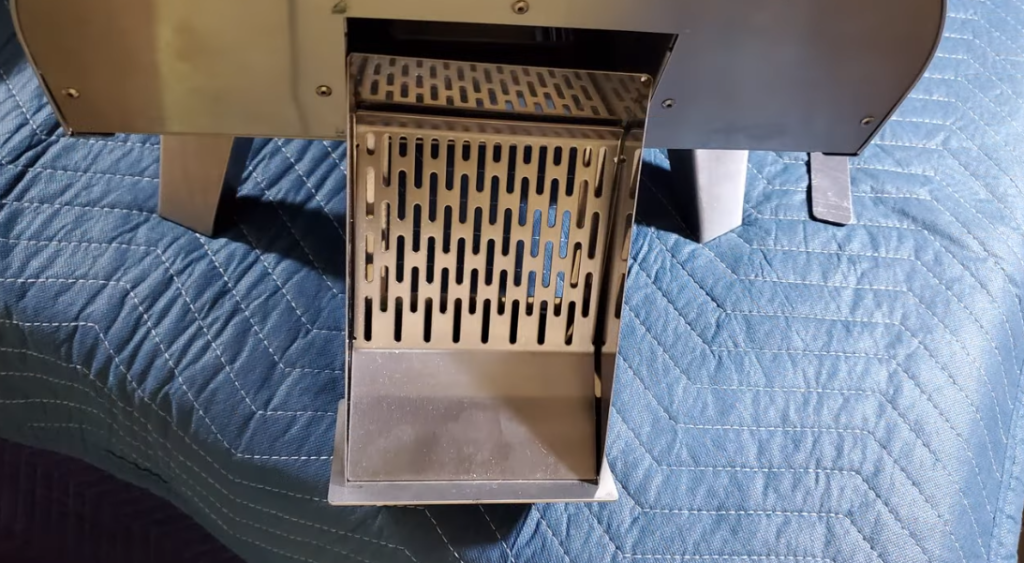
The door was also thick stainless steel, but we had problems fitting the door correctly to the oven each time we wanted to use it. The fit was terrible and the fact that the door itself wasn’t hinged made getting it in or out of the oven difficult and dangerous.
The wood handle did help keep the hand from touching the hot surface of the door but it wasn’t that reliable either. The screw loosens up after some time such that the door almost rotates upside down while pulling it out. The handle can even twist off when removing the door which can be quite dangerous when it’s hot.
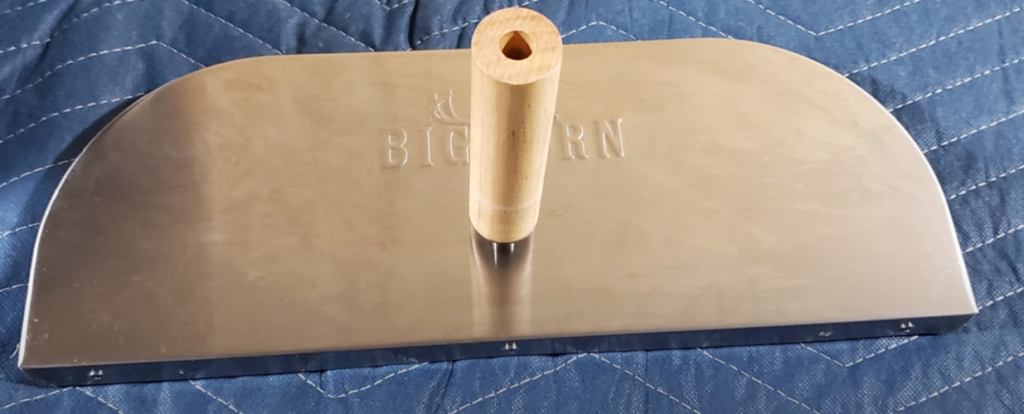


We did put a few drops of Loctite on the screw that helped form a strong seal and since then, the handle has remained firm. Still, though, the wood seemed like it could snap off over time with all the fiddling involved in fitting the door to the oven.
The provided pizza stone is made using cordierite. It’s able to withstand high temperatures. The downside is that it’s a bit thin and sits on screw heads. We didn’t have any issues with ours but many reported that their stone cracked or broke after only the second use. So, keep that in mind as you may have to replace it sooner than expected.

Overall, apart from the poor door design and the thin pizza stone, the Big Horn’s build quality was good. The whole unit felt solid but time will tell if it can indeed hold up.
Our Score: 8.5 out of 10
Assembly
The Big Horn came nicely packaged with all the parts fitted inside the oven body – non was damaged.

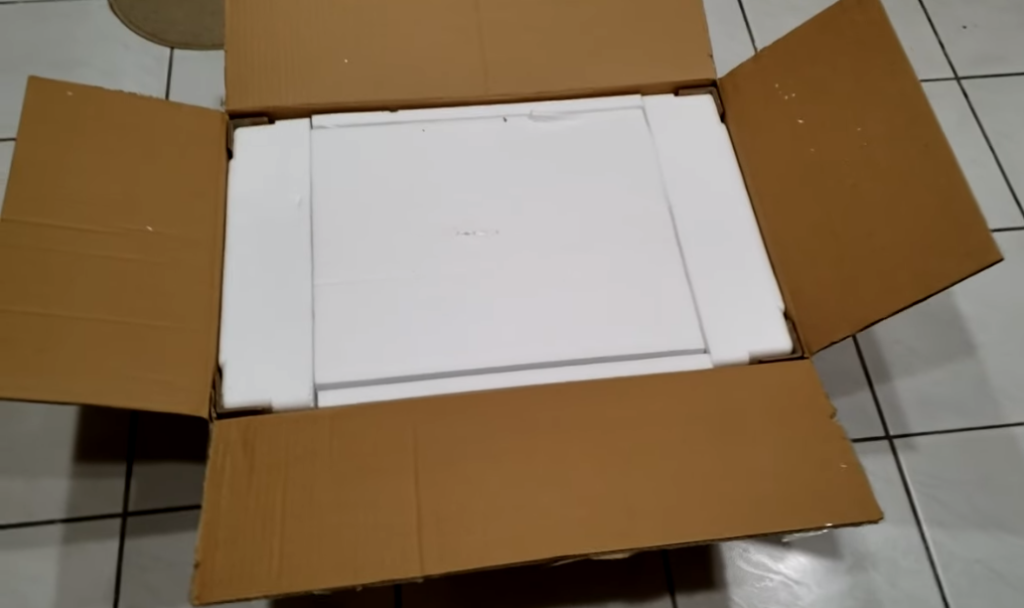
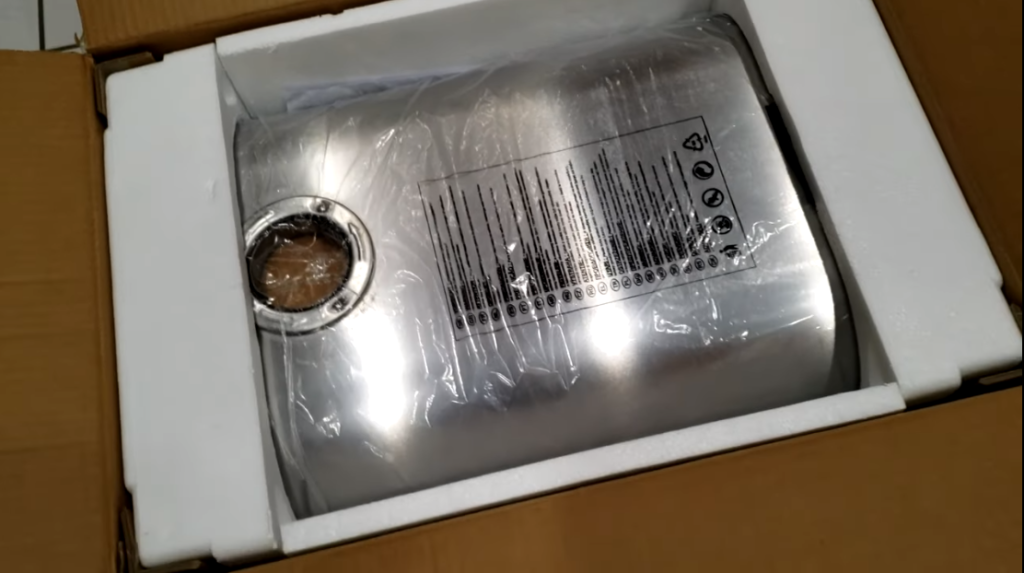
The contents of the box included the oven body assembly (with the legs already attached and folded down), the chimney pipe, the chimney lid/pellet scoop, the pellet hopper, the pellet grid, the firebox, the firebox assembly handle, the ashtray, the poker, door & its handle, pizza stone, and M4x10 bolt.

It’s about 12 pieces in total which is way more than the other pizza ovens we’ve reviewed, so a fair amount of assembly is required. The instructions provided were not very comprehensive. They are clumsily written but the process wasn’t hard as it’s mostly sliding parts into place.
Once we got all the parts out of the box, we just placed the oven body on a leveled table and opened the four legs while it was upside down. From there, we attached the ashtray (which goes to the bottom of the body) and flipped over the oven body.

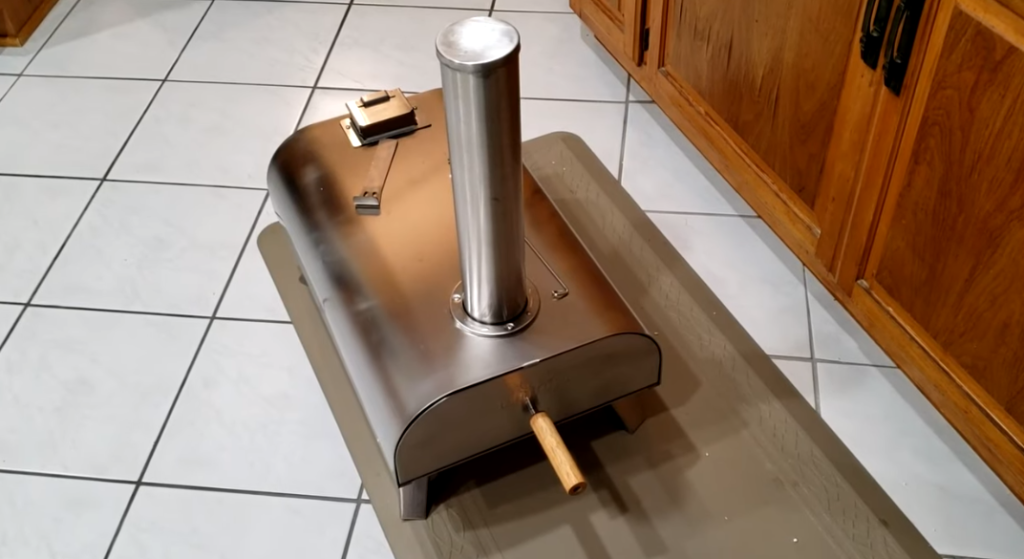
The next steps were just installing the hopper using the two M4x10 screws, whirling the chimney pipe to the oven body, placing the pellet grid to the firebox, and sliding it into the oven body. The rest was just installing the ash tray handle to the oven body and putting the chimney lid on the chimney pipe. Once the oven was set, we put the pizza stone, attached the door handle to the door, and we were ready to go.
The only part that needs a tool is the pellet hopper which requires a screwdriver to fix it into place. All the other pieces fit together very well. It doesn’t take more than 15 minutes to set it up. Both the fire tray and hopper have handles that allow you to open and close them easily and safely when they’re hot.

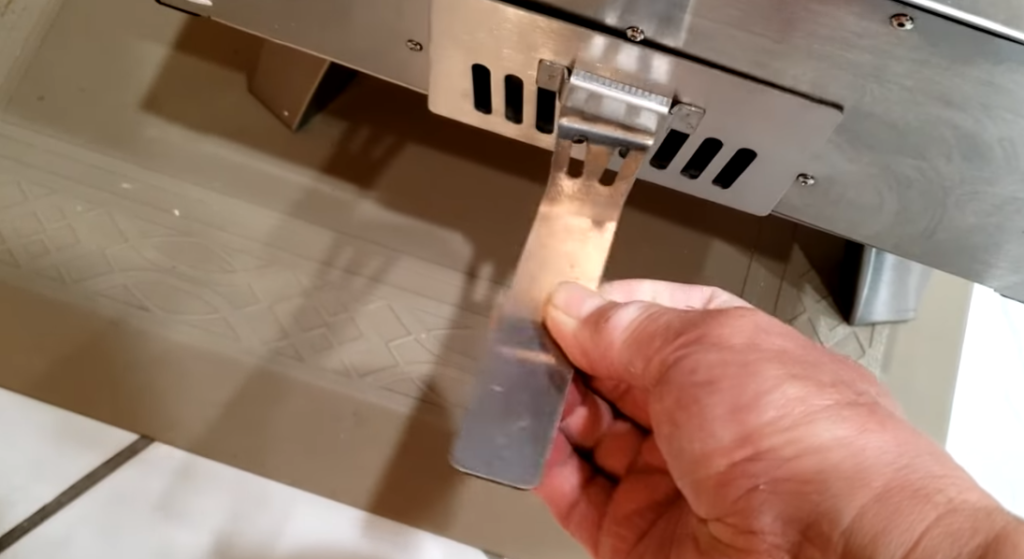
You’ll need an overhead clearance of at least 2m from the chimney top as flames tend to blow outside of the oven from the chimney top. We also recommend at least 2m clearance from the other surrounding items.
The oven has to be placed on a flat, firm, non-flammable surface, although the base doesn’t get that hot to cause damage if you placed it on a wooden table or plastic Rubbermaid table. Most of the heat gets vectored up to the roof to radiate heat down onto the pizza stone floor, hence the heat coming off the bottom is fairly subdued. We set ours on a metal table but a marble top is also fine. The legs don’t get hot either but they don’t have a rubber stopper like the Karu 12.

They’re just bare metal and hence are likely to scratch a glass table unless you place something between them and the glass. Furthermore, they don’t actually lock in place. You have to ensure where you place the oven is secure or you place it on a table that has side bumpers. Another issue we noted is that the chimney doesn’t lock in tightly to the oven body. It’s a bit loose.
The unit comes apart easily though and it’s simple to take inside for storage, which is something you’ll have to do often since the package doesn’t include a cover. You can’t leave it outside, otherwise, it won’t last – unless you purchase the cover to protect it from the elements.
The package doesn’t also include the pizza peel and thermometer. You’ll need to get the pizza peel to be able to launch, turn, and remove your pizzas from the oven. A digital or infrared thermometer gun will also be essential so that you’re able to tell the temperature inside the oven as well as check the temperature of the pizza stone between the bakes.
Our Score: 8.5 out of 10

Big Horn Pizza Oven
Performance
The Big Horn had no trouble reaching temperatures above 800°F. We recorded temperatures of up to 900°F using our infrared thermometer – that’s sufficiently hot for most pizzas. However, it takes work to reach such high temperatures and even more work to keep the heat consistent.
Pre-heating Time
The company states that it takes around 18 minutes to reach temperatures of up to 860°F, but from our tests, the Big Horn took slightly longer than that. At 18 minutes, the pizza stone was at about 700°F. After about 25 minutes is when the temperature of the pizza stone was around 850°F. It generally takes 20 to 30 minutes for the whole oven to get hot enough to cook a pizza.


Airflow System
The heat distribution inside the oven was pretty good. The firebox and chimney allow for air to flow very well within the unit. The airflow carries the heat and flame from the firebox at the back, then across the oven, and finally out the chimney that’s at the front.
The chimney basically creates the draft that helps bring the flames up the oven’s roof. So, the entire interior gets heated uniformly and the flame even curls over the pizza almost all the way to the front to cook the toppings.

The pizza stone did heat up just as well as the back and the middle section of the oven which allowed it to cook the pizza bottoms all through. There wasn’t really much variance in temperature inside the oven, except for the back, which was hotter than any other part because that’s where the firebox was.
Heat Retention
The Big Horn had no trouble getting really hot. It was able to go over 900°F during our tests. The problem was keeping the heat and flame consistent enough to cook multiple pizzas subsequently. The roof is just stainless steel. It’s not insulated like Ooni Karu 12 or other Ooni pizza ovens hence the oven doesn’t retain the heat well.
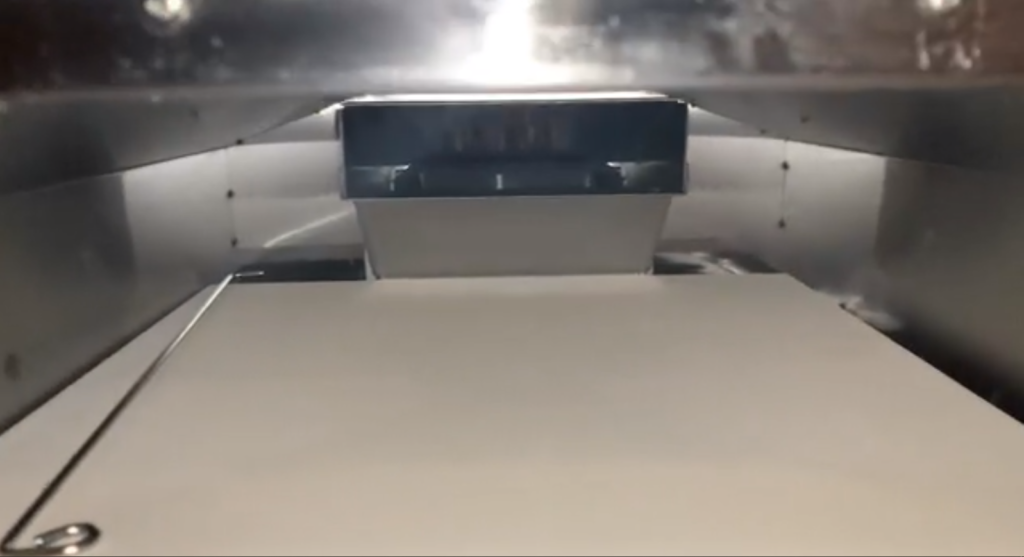

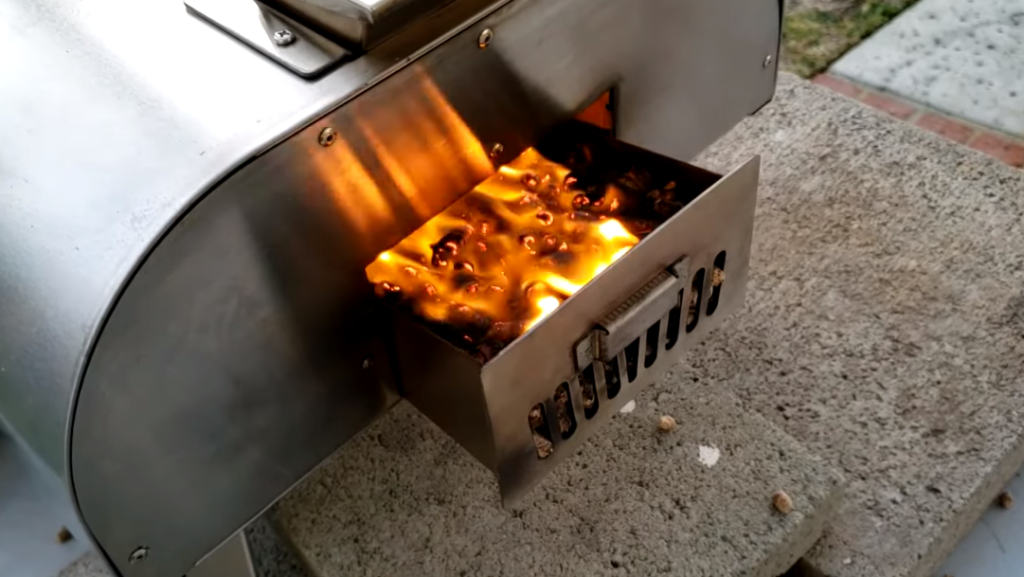
We found that once it gets to temp (over 800°F), you only have enough time to cook a pizza and after it’s out, the heat begins to drop significantly. It doesn’t retain the high temperature for long. We had to add at least a scoop of pellets each time we took out a pizza so as to get the oven to optimum temperature again to cook the next pizza. This took around 5 to 10 minutes because once you add the pellets, the fire goes down first before the fresh pellets you’ve added light and the heat goes back up.
So, you have to give it some time to reheat and get up to temp again before you can put in the next pizza. It’s a lot of work compared to other similar ovens and time-consuming too if you want to make multiple pizzas. Even the pizza stone doesn’t retain heat well. It does preheat fast and transfer the heat evenly but it doesn’t hold the heat for long due to its thinness.
Generally, while it’s able to hit high temperatures, you have to put in work to keep this Big Horn oven hot. You need to add pellets constantly (between each pizza), otherwise, the heat and flame will die down and the next pizza you put in the oven will get undercooked.
Our Score: 7.5 out of 10

Big Horn Pizza Oven
The Results
While it takes some work to maintain the temp of the Big Horn, once it heats up properly, everything seems to flow pretty smoothly. We got good results with nearly every pizza we tried, except for the first one though.

First Pizza
We started off with Margherita pizza with a topping of fresh mozzarella cheese (cut into small ½-inch cubes), and finely grated parmigiano-reggiano cheese. We slid the Margherita pizza onto the pizza stone and allowed it to cook. After about a minute and a half of cooking, we decided to remove the pizza and the result was quite bad. It was basically a jumbled mess.

The first nightmare was getting the pizza off the stone. Although we were very skeptical, we followed what the Big Horn manual said (grease the pizza peel a bit with oil) and as a result, the pizza ended up stuck badly to the pizza stone. We knew from the onset that this was a horrible idea but we gave it a try anyway.
The bottom of what we salvaged from the oven was undercooked even though we had gotten the stone hot enough. Part of the reason was probably that the dough was thick and moist. The top crust was burned and didn’t get as fluffy as the pizzas we’re used to making.
The toppings weren’t spared either. They were charred, especially the cheese. We probably put a lot of toppings which placed them closer to the flame, hence they got charred way too easily. Generally, what we got from our first pizza was just charred toppings and raw dough.
Second Pizza
Despite the initial disappointment, we gave the Margherita pizza another try after a bit of learning to see if we can pull it off. This round, the pizza did turn out decent.

We ensured the dough was a little dry this time and we also put some cornmeal on the pizza peel. That helped a lot as the pizza didn’t get stuck on the pizza stone, but the bottom part was still a little soft.

The toppings were cooked well – we put the cheese in the freezer for around 20 minutes before making the pizza to help slow down the cooking so that the crust and bottom of the pizza can cook well before the cheese is toast. It’s a trick we learned over the years and it came in handy in this case. Generally, other than the bottom being a bit soft, our second Margherita pizza turned out okay.
Third Pizza
We were definitely now getting a hold of how to use the Big Horn oven. After making several adjustments like keeping the pizza a little flat/thin, ensuring the dough was dry enough, and adding some flour on the pizza peel, our third pizza was almost perfect. It was a Neapolitan pizza. We added a little sauce and topped it with San Marzano tomatoes (crushed), fresh mozzarella cheese, and basil.


Apart from one side being a little charred, the pizza came out looking delish. It was cooked almost as we expected. The toppings were well-cooked and the crust was crispy with some leopard-ing on its bottom – it wasn’t soft like the Margherita pizza. It had a nice crunch and on the inside, it was soft and chewy. It was basically an authentic Neapolitan pizza.

Fourth Pizza
Our fourth pizza was a pepperoni pizza with mushrooms and it was perfect. We used fresh mozzarella so that the cheese doesn’t burn. When we slid out the pizza, it looked amazing.


The crust was medium brown and nicely blistered. The toppings were charred slightly but that made them look even more amazing with the beautiful bubbled cheese and the pepperoni cupping up. The pizza was definitely delicious with the crust nice and crispy on the exterior and cooked all through.

The bottom was perfect. It was crisp and had a little more leopard-ing than the Neapolitan pizza.
Fifth Pizza
Now that we had mastered how to use the Big Horn pizza oven, we tried making barbecue pizza for our fifth test. We didn’t get good results when we first tried a pizza with a lot of toppings on it, so we wanted to give it another go and the barbecue chicken pizza was a good choice as it does have more toppings. Well, we were not disappointed. The pizza came out amazing.

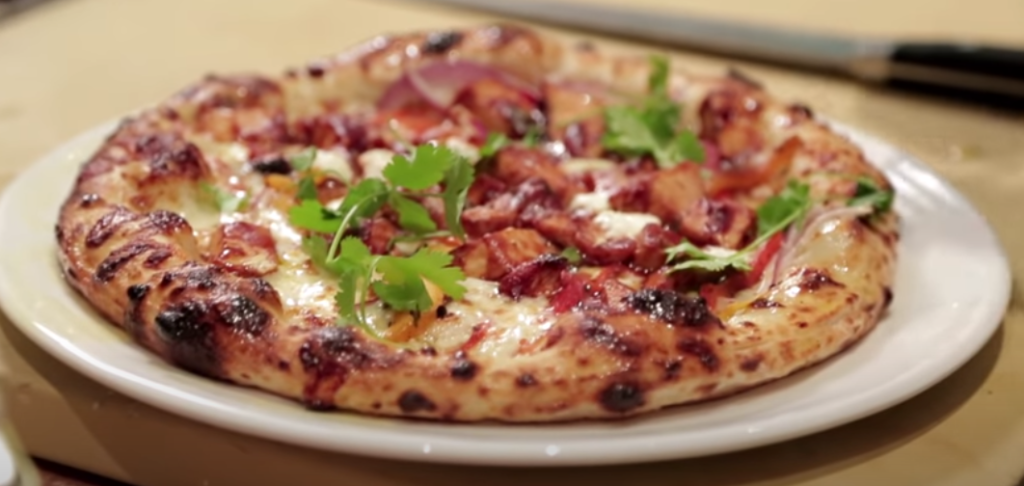
The crust was fully baked with nice brown leopard-ing on the bottom and charred bubbles that we desired. It was crispy and chewy. The toppings were perfectly cooked with nice caramelized edges. The cheese was properly browned and stretchy. This was probably the best pizza that we made so far in the Big Horn – it was simply a bubbly goodness that we really enjoyed.
We made several more pizzas with the Big Horn during our testing and they all still turned out excellent.


Except for the first Margherita pizza which was a throw-away, all the subsequent pizzas we made tasted incredible. Not just because of the ingredients. That smoky wood-fired flavor of the pellets infuses into the pizza dough and the toppings too. It gave the pizzas a unique, delicious taste that you can only get from a wood-fired pizza oven.
So, overall, we were pleased with the results of this Big Horn pizza oven. But, there’s certainly a learning curve you’ll have to go through before you can get great results. We had to make several adjustments like keeping the pizza a little flat (thin dough with fewer toppings), ensuring the dough was dry enough (less than 60% hydration), and adding some flour to the pizza peel.
You also have to allow the pizza stone to reheat to optimum temp between pizzas, otherwise, you’ll end up with undercooked crust and burned toppings. It took around 5 minutes for our stone to get hot enough – our target temp was 850°F, which we used an infrared thermometer gun to check. We did this before each pizza and the result was always a really crispy crust and bottom. It’s a bit of a learning process but you get better at it the more you use the oven.
Our Score: 8.5 out of 10
Cooking Time
According to the manufacturer, the Big Horn takes around 90 seconds or less to cook a pizza once it’s preheated. However, in our testing, we found the time required to perfectly crisp the crust and the bottom averaged around 2 minutes, which was still fairly fast. We checked pizzas after every 30 seconds and turned them when necessary so as to get an all-around crispy crust.
It’s only the Margherita and Neapolitan pizzas that we cooked for 90 seconds and we turned them only three times. The Neapolitan pizza came out almost perfect within that 90 seconds of cooking because of its usual thin dough and less toppings. The pepperoni pizza with mushroom, barbecue pizza, and the other subsequent pizzas, were all cooked for 2 minutes. We turned them four times (after every 30 seconds) to ensure we get that crispy crust and even cook.
To put it simply, the Big Horn oven cooks fast, just as stated. Note though that your pizza would take longer to cook if the dough is very thick and you put too much toppings on it. If you keep the dough thin and use minimal toppings, you’ll have your pizzas cooked all through fast once you figure out the rotation and timing.

Big Horn Pizza Oven
Cooking Space

The Big Horn’s total baking surface measures just 12 x 12 inches. It’s a small size in our opinion. With such a compact interior, you can only make small and medium-sized pizzas. The most you can go is probably 11 inches, not the 12-inch pizza that the company claims – that’s the absolute maximum size of the interior, meaning even putting the pizza in the oven would be a problem.
Our pizza doughs were mostly around 10 to 11 inches in diameter, yet we still found the oven’s opening to be quite small such that we struggled to rotate the pizzas inside it. We had to use a smaller pizza peel to be able to turn the pizza quickly as it was proving almost impossible to do so with the 12-inch peel. You need to be able to rotate the pizza fast because you can easily end up with burnt edges in like 5 seconds of struggling to turn it.
Alternatively, you can decide to make much smaller pizzas (probably 9 inches wide) so that you can easily turn them fast when necessary. Anything larger than 9 inches will be a bit tough to turn. The other option is to take out the pizza, turn it, and put it back into the oven. We tried that with a couple of pizzas and it worked out fine for us.
Our Score: 7 out of 10
Cleaning
The Big Horn was actually not difficult to clean at all. We had an easy time cleaning it. The ash catch tray was the part that needed cleaning a lot, especially during the cooking session. You have to remove it to discard the ash and then clear any remaining ash using a brush. You may have to do this more often depending on the number of pizzas you’re making.
The oven does burn very efficiently though, so not much ash is left. In our test, for instance, we emptied the ash catch tray after every hour of cooking to ensure there was optimal burning with air venting. The tray itself slides off easily and you can use the firebox assembly handle to remove it from the slide in the catch bin so that you don’t get burned as it can be hot to touch.
The other part requiring regular cleaning is the pizza stone. This one we had to clean after cooking two pizzas to prevent the dough from sticking to the surface due to some burned-up leftover residue. A paper towel and a grill brush are enough to clean it. You can clean it thoroughly once you’re done cooking. You have to let it cool down completely before you pull it out using the provided poker for cleaning. If you pull it out when it’s hot, it can crack easily due to the quick temp changes.
You’ll equally have to clean the fire tray and also the grill in case they get dirty, especially if you cook a fish or a seafood pizza. You should only do this once the oven has cooled down completely. This is also a good time to clean the interior of the oven (the combustion chamber) to clear out the ash inside and even tap the chimney pipe to shake off ash and dust.
Caution is needed though while cleaning the interior of the Big Horn because some edges on the inside are sharp. You can easily get cut when reaching inside to clean the chamber, so you have to be very careful.
The exterior of the oven may not need much cleaning – it didn’t even get dirty during our test. But, if there’s grease or fat on it, you can clean it using a soft wooden/plastic scraper once the oven cools down. You can even use a cloth and hot soapy water if you want to clean it fully.
Overall, we found the cleaning process to be simple, but you have to do it regularly to ensure better burning and optimal performance, especially emptying the ash catch tray.
Our Score: 8.5 out of 10
Other Highlights
The Big Horn oven is fueled by wood pellets that are fed into a firebox through the rear-top-mounted hopper. As we’ve mentioned several times, using this oven needs some skill. You have to constantly watch and maintain the fire because the heat drops between pizzas. It’s easy for the oven to cool down if you don’t feed it pellets to keep the fire going.


The oven also needs some time to reheat after adding pellets so that it can get to the optimal temperature for the next pizza. This should take around 5 to 10 minutes if you keep the fire properly stoked and burning. Once flames begin to come out of the chimney opening, then you know that the oven is hot enough to bake a pizza.
Starting the fire for the first time is easy. We didn’t struggle at all – it’s simple if you use a blow torch to ignite the pellets in the firebox. We used oak pellets during our testing and they ignited fast, plus we liked them because the oak doesn’t change the flavor of the pizzas that much. It just adds a smokier flavor that makes the pizza taste even better.

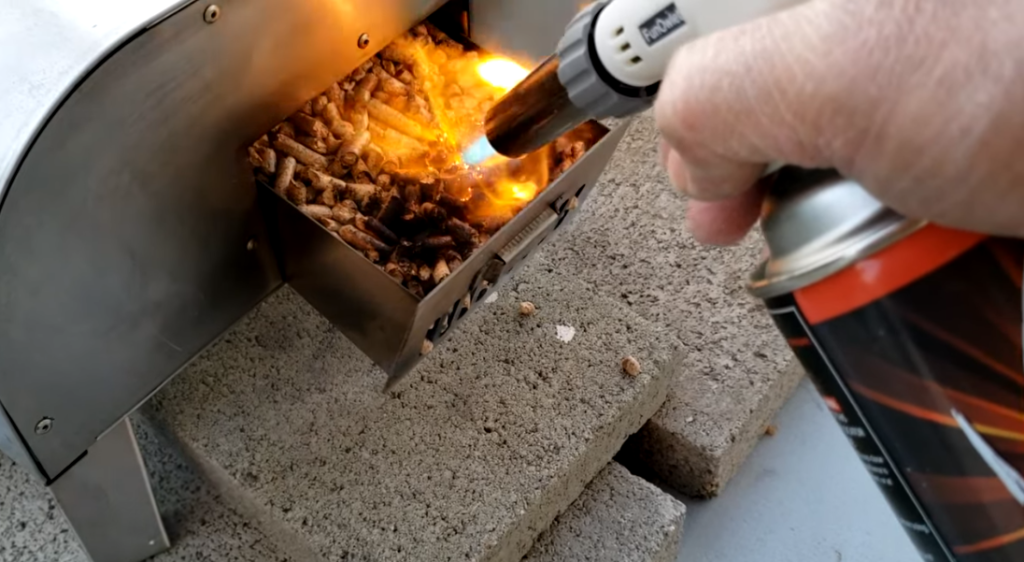

You can use any other hardwood pellets like cherry wood pellets or even a combination of pellets like oak and applewood pellets. Note that the taste of the pizzas may change depending on the kind of wood pellets you use. You can even use wood chunks on this Big Horn pizza oven but we don’t recommend them as they produce more soot and ash, although they burn longer.
We noted that the Big Horn burns through the wood pellets quite quickly. It takes about two scoops or 300 grams to light it and get it hot enough to cook the first pizza. The pellet grid itself is small, so the oven chews through the pellets quickly when the fire gets rolling.

The pellets generally don’t last that long to cook two pizzas back-to-back – the fire starts to go down after one pizza, hence you have to add another scoop to keep the fire red hot and ready for the next pizza. Sometimes we even had to add a little over a scoop to get the fire going.
In other words, the Big Horn is not really that efficient compared to other wood pellet ovens we’ve tested. Plus, you can only add a scoop at a time due to the small pellet grid. If you put too much at once, the oven smokes heavily and can produce a huge flame that can burn the pizza.






The best approach is to keep the pellets as light as possible, especially the top layer – this allows the firebox to burn more efficiently. Having the pellets and everything else ready beforehand is also key – you get to use the pellets efficiently and avoid wasting time between bakes.
Another little trick we learned is taking off the oven door before putting the pellets in. Doing so when it’s time to feed more pellets creates a draft that allows the pellets to ignite faster and evenly, so you don’t wait long for the oven to get back to temp.
The pellet hopper, fire tray, and even the ash catch tray get very hot during cooking. Fortunately, there’s a handle provided with the Big Horn that helps you to open and close them without touching their hot handles. Only the door handle doesn’t heat up as it’s made of wood. The base of the oven is not that hot too like we mentioned earlier. The legs also remain cool. But, the rest of the oven’s body gets hot, so you can’t touch it with bare hands when the fire is on.
You also have to watch out for the chimney. When the cap is off and the fire is burning, flames come out of it – it literally becomes a flame thrower. The flames can shoot over 2 inches off the top when the fire is really going. Therefore, there has to be sufficient clearance above the chimney for safe use.
It’s definitely not the ideal oven to use under any cover, even on an apartment terrace – we highly advise against it. It’s only safe for use outdoors in the open air.

Big Horn Pizza Oven
Final Remarks
Overall, the Big Horn is a great-looking outdoor pizza oven and it does cook pizzas very well. We were really pleased with its results and some other key features like its compact size and fairly fast cooking time. However, it falls short in some areas like the limited cooking space and poor door design. Some of its parts also felt clunky and of low quality.
The biggest hurdle though is keeping the heat consistent as you have to constantly feed it pellets. It basically takes more work to maintain an optimal temperature for cooking pizzas compared to its competitors. But, once you get used to it and are able to keep the fire going as it should, you’re able to make delicious pizzas that are almost perfect.
It’s definitely not the best choice for making multiple pizzas for a large crowd. It’s possible to do it but it will take time given that the oven needs some time to preheat after every pizza.
We would certainly recommend it for smaller settings, plus the fact that it’s very affordable makes it a great choice if you’re on a budget. Besides pizza, you can use it for roasting fish, burgers, salmon, etc. It imparts a delicious smoky flavor to anything you cook in it.

